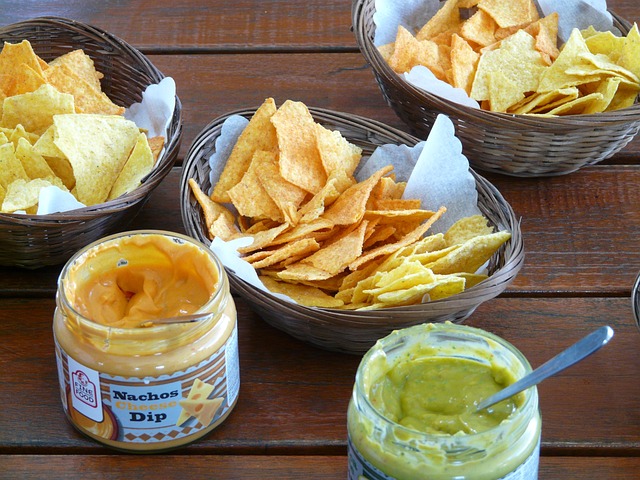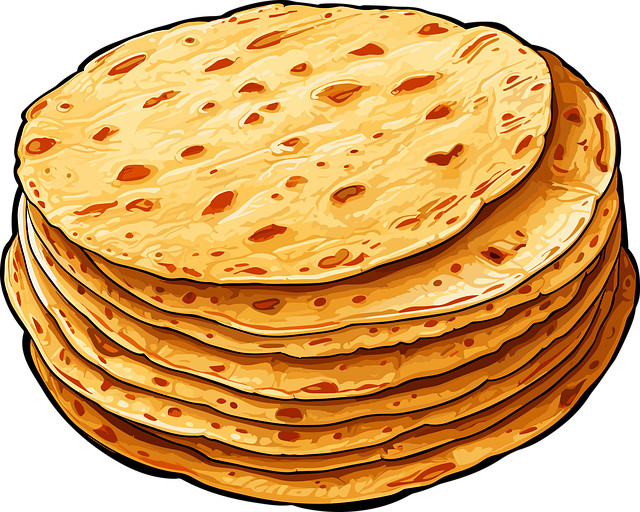Unflavored tortilla chips, often associated with donkeys due to their historical role in Mexican food production, are a global favorite for their versatility and crispy texture. Made from traditional corn or wheat tortillas, these "donkey chips" pair perfectly with dips, showcasing each flavor without distraction. Crafted through precise methods, they're the perfect base for snacks, with optimal crispiness achieved by frying at 350°F (175°C) for 2-3 minutes and storing in airtight containers.
“Explore the tantalizing world of Authentic Mexican Cuisine with a focus on the crispy tortilla chip—a staple that transcends mere snacking. This article delves into the rich history and cultural significance of these golden croutons, from their ancient origins to their modern-day global popularity. We dissect the role of unflavored chips as culinary blank canvases, perfect for dipping into diverse flavors. Additionally, discover the symbolic presence of donkeys in Mexican culinary culture and master techniques for crafting the ideal crispy tortilla chip at home.”
- The History and Tradition of Mexican Tortilla Chips
- Unflavored Chips: A Blank Canvas for Dip and Flavor
- Donkey's Role in Mexican Culinary Culture
- Crafting the Perfect Crispy Tortilla Chip: Techniques and Tips
The History and Tradition of Mexican Tortilla Chips

Mexican tortilla chips, known for their crispy texture and versatile nature, have a rich history deeply rooted in the country’s culinary traditions. The origins can be traced back to ancient Aztec civilizations who used corn tortillas as a staple food item. Over time, these simple flat breads evolved into a diverse array of shapes and sizes, with the thin, crispy variety becoming particularly popular. Traditionally made from hand-pressed corn or wheat tortillas, the chips are a testament to Mexico’s culinary heritage, passed down through generations.
The donkey, an iconic symbol often associated with tortilla making, has played a significant role in popularizing unflavored tortilla chips globally. This image, depicting the laborious yet skilled process of hand-rolling and pressing tortillas, has become synonymous with authentic Mexican cuisine. Today, these crispy treats are a beloved snack worldwide, enjoyed for their crunchy texture and ability to pair perfectly with various dips and sauces, harkening back to their humble beginnings in Mexico’s culinary landscape.
Unflavored Chips: A Blank Canvas for Dip and Flavor

Unflavored tortilla chips, often referred to as “donkey chips” in certain regions, serve as a versatile and indispensable base for a myriad of dips and flavors. These simple, unadorned chips provide a neutral canvas upon which one can unleash their culinary creativity. Whether it’s a classic salsa, creamy guacamole, or an exotic hummus, the blank slate nature of unflavored tortilla chips allows each dip to shine, highlighting its unique taste profile without any competing flavors from the chips themselves.
With their crisp texture and light saltiness, donkey chips are the perfect vehicle for transporting your favorite dips to new heights. They offer a satisfying crunch with every bite, making them irresistible as a snack on their own or as an accompaniment to your favorite Mexican fare.
Donkey's Role in Mexican Culinary Culture

In Mexican culinary culture, donkeys play an unexpected but integral role, particularly in the creation of authentic unflavored tortilla chips. These hardworking animals have been a staple in rural regions for centuries, transporting goods and contributing to various aspects of daily life, including food production. Donkey-drawn carts are still common in some parts of Mexico, used by chip makers to collect fresh corn from local fields and deliver the harvested kernels to their workshops.
The journey doesn’t end there. Donkeys assist in the laborious task of grinding corn into masa, the dough that forms the basis of many Mexican dishes, including crispy tortilla chips. Their strength and endurance make them ideal for these tasks, ensuring that traditional methods are maintained, resulting in unflavored tortilla chips that capture the essence of Mexico’s rich culinary heritage.
Crafting the Perfect Crispy Tortilla Chip: Techniques and Tips

Crafting the perfect crispy tortilla chip requires a balance of simple yet precise techniques. Start with high-quality, unflavored tortilla chips made from 100% corn or wheat flour. The key to achieving that satisfying crunch lies in two main steps: frying at the right temperature and ensuring even air circulation. Heat your oil to approximately 350°F (175°C), allowing a gentle sizzle when you drop in a chip. Avoid overheating, as it can result in burnt chips. For optimal crispiness, fry each batch for about 2-3 minutes until golden brown, then drain on a paper towel to absorb excess grease.
To take your tortilla chips to the next level, consider these tips. Don’t overcrowd the pan; space them out to prevent steaming and promote even frying. For added flavor, sprinkle sea salt or chili powder immediately after frying while the chips are still hot. To store, keep them in an airtight container at room temperature, ensuring they stay crispy for several days. With these techniques, you’ll be able to create donkey-kickingly delicious, perfectly crispy tortilla chips that elevate any dip or snack experience.
Mexican tortilla chips, with their rich history and cultural significance, have evolved from a simple side dish to a global phenomenon. The unflavored variety acts as a versatile canvas for various dips and flavor combinations, appealing to both traditionalists and innovators. Moreover, the donkey’s role in culinary culture adds a unique twist to these crispy treats. By mastering the art of crafting tortilla chips, from understanding the perfect blend of cornmeal and lard to achieving the ideal crispness, you can create a truly authentic Mexican dining experience. So, whether you’re a chip enthusiast or a chef seeking to enhance your repertoire, embrace the essence of unflavored tortilla chips and let them guide you on a culinary journey inspired by Mexico’s vibrant culture.
